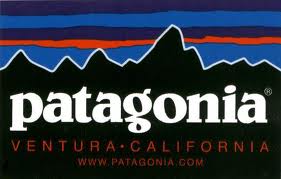 Armed with pots and pans, 500 Patagonia Inc. employees staged a Chilean-style protest at company’s headquarters in Ventura, CA to protest the Chilean government’s approval of a multi-national energy company to construct five huge dams in the area of southern Chile that inspired Yvon Chouinard to name the company Patagonia.
Armed with pots and pans, 500 Patagonia Inc. employees staged a Chilean-style protest at company’s headquarters in Ventura, CA to protest the Chilean government’s approval of a multi-national energy company to construct five huge dams in the area of southern Chile that inspired Yvon Chouinard to name the company Patagonia.
According to a statement from Patagonia Inc., employees came armed with double boilers, frying pans and casserole pots. Banging on cookwear in noisy opposition, the employees protested to show solidarity with the thousands of Chileans protesting in Chile this week.
Recent polls show that over 74 percent of the Chilean population is opposed to the dams. An estimated 30,000-40,000 people first turned out in Santiago, Chile, last week against the damming of their rivers. This week, thousands more are expected to converge in Chile to show public opposition. Company officials organized the impromptu gathering because of Patagonia’s long abiding connection to the area that is its namesake.
“This is like building Hoover Dam at the entrance to Yosemite Valley,” said Rick Ridgeway, Patagonia vice president of environmental affairs, who knows the region well, recently spending time there with the making of the movie, 180 South. “This is not about a North American corporation trying to tell Chile what to do – it’s about asking Chile’s democratically elected government to listen to the majority of its own people when they say there has to be a better way.”
Patagonia Inc.’s ties to the Patagonia region run 40 years deep. Beginning about 30 years ago, Yvon Chouinard, founder of Patagonia started taking employees to Patagonia for company walkabouts where the employees would gather to set the company’s direction and learn about the region. Over 70 Patagonia employees have traveled on the job to Patagonia and the company has contributed over $2.4 million to the protection of the Patagonia regions of Chile and Argentina.
Patagonia’s statement said the dams project is certain to destroy the character of one of Chile’s wildest regions – the region that inspired the company’s name and its ongoing efforts to do what it can to use business to protect and preserve the natural world. This part of southern Chile is considered one of the world’s last, great wilderness areas. It has been dubbed an “eco-gem” for its rare fauna, ice-sculptured fjords and almost total absence of industrial development.
The transmission lines would be held by towers more than 200 feet high. Following a winding corridor almost 400-feet wide, a thousand miles of forest would have to be clear-cut and the rest of the corridor’s path similarly cleared. The corridor would intersect 64 communities and 14 protected areas. It would divide endangered forests and some of Chile’s most spectacular national parks. It would also open up rivers north of Patagonia to more dam building.













